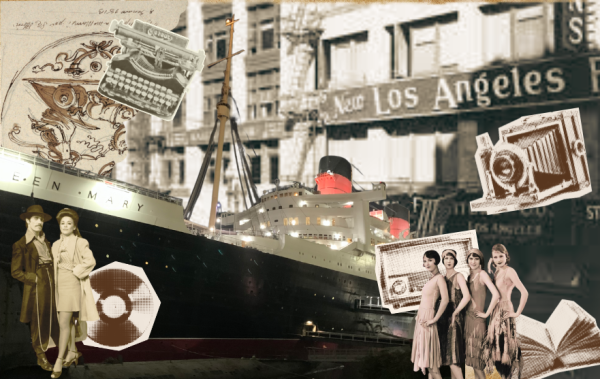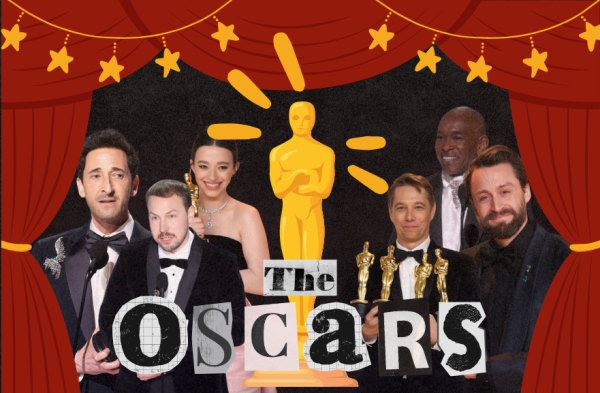The Nutcracker can be Found Outlandishly Offensive
Image showing a pair of pointe shoes, a nutcracker, and Clara with her doll. (Photography by: Ollie Hart)
The Nutcracker, written by E.T.A Hoffman, was first performed in 1892. Known as a family favorite show to see during the holiday season, the ballet tells the story of Clara receiving the nutcracker as a Christmas gift—then her dreams of a journey through the Land of Sweets. During Clara’s adventure, the story provides elements of romance as she falls in love with her nutcracker doll that was gifted by her grandfather.
The Nutcracker is a show well-known to many. As such, it is time to reflect on the accuracy of some of the characters and cultures that are represented.
The way some of the characters dance, and certain characters’ names may be found offensive by today’s modern standards. Some of the roles ballerinas take on in the performance are known as Spanish, Arabian, Chinese, and Russian—using ethnicity as the name of the role. Not only is the idea of stereotypical ethnic dancing inherently controversial, but most of the time these roles are played by white dancers. Their choreography can be found offensive to some people due to harmful stereotypical dance moves and gestures as well as clothing.
For instance, when people are playing Chinese, the choreography makes the dancers point their index fingers up. This movement can be perceived by many as making fun of Chinese culture. The pointing of the index finger is a stereotypical move that came from racist remarks about foreign cultures, so the production incorporates ingenuine moves, rather than traditional Chinese dance. Some well-known traditional Chinese dances such as the Dragon Dance and the Lion dance could be added to the production, in replacement.
Makayla Ishii, a 9th-grade student at Huntington Beach High School who has seen The Nutcracker says, “They improvise, and put their arms up [along with] putting their index fingers up.”
When it comes to Arabian choreography, hand movements are found to be the main problem of dancing. Many ways the hand is moved can be found offensive to the different cultures found in the show. For Arabian specifically, the hands can be found placed above the head connected or the palms of the hands can be found placed up with the arms bent, another offensive stereotypical movement.
The Russian movement is based on Rasputin. Most of the time, in the choreography, there is a lot of jumping up and down, long-running around with your legs kicking back. The Rasputin originally contained traditional Jewish dancing, but over the years, people have associated the movement with Russia—and the song, Ra Ra Rasputin by Boney M. from 1978.
For the Spanish role, the dancing is very unconventional in the sense that the moves are something you would find in a Hollywood movie. The style is based on Spanish dancing, but it has been dialed down to a more conservative type of movement.
All of the costumes are based on traditional clothing but often are not culturally accurate or sensitive to these diverse communities. When dancing, the ballerinas are also given specific props to dance with that highlight the cultures that they are appropriating. The Spanish sometimes use fans, but that idea is changed from studio to studio, and not featured in all productions of the show. The Chinese use paper umbrellas, which can be a strange prop to use, although paper umbrellas are a symbol of happiness and joy in Chinese culture.
Ishii adds, “A lot of time chopsticks are put in [the dancer’s] hair…the leads normally have umbrellas [to dance with].”
Yes, the chopsticks are from Chinese culture, but this can still be hurtful to the culture. Why would chopsticks be put into one’s hair, and rather why not try and use them to enhance the dance itself? In correlation, dance companies need to take into consideration the opinions of the ethnic groups they are performing as.
The whole premise of The Nutcracker is to show and celebrate the differences in cultures. However, modernizing the movements, and perhaps the music, might be a good suggestion in order to make the ballet’s portrayals of these groups more accurate and less offensive. Studios should use their power and make these changes so that, The Nutcracker can still be a holiday piece that everyone can enjoy watching, or performing while fitting in with the modern-day parameters of our world—ridding themselves of bad stereotypes and racist portrayals.
Your donation will support the student journalists of Huntington Beach High School. Your contribution will allow us to cover our annual website hosting costs.
Thank you for supporting our program!







